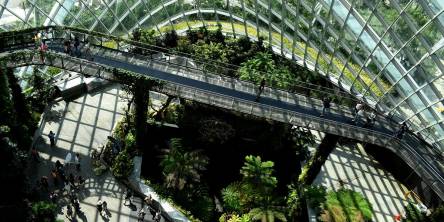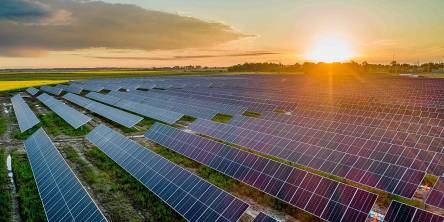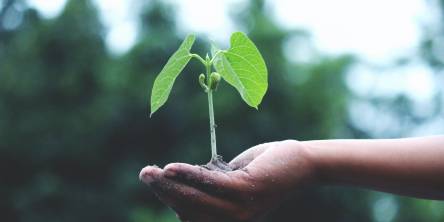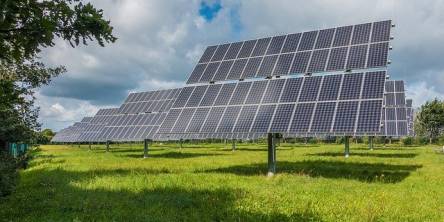Why Do We Need to Change the Existing Farming Methods?
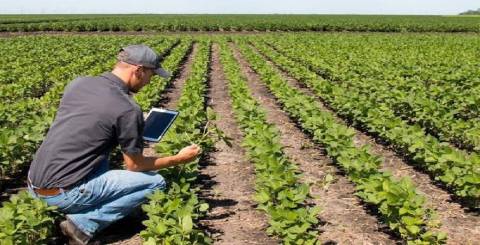
The human population is increasing day by day so there is a need for researching those practices that can feed the growing population without disturbing the ecosystem. The existing farming practices are increasing crop production but it is imparting its harmful effects on the soil, land, and water.
Sustainable agriculture is not in mainstream use but it is now being used by certain farmers, companies, and individuals in different parts of the world. In sustainable agriculture, society's food requirements meet considering the ecological cycles. In other words, it implements and promotes those methods and farming practices that keep the health of the environment sound and protects public health.
The environment has become an area of concern over the past decade. The transformation of land for crop production and the excessive use of natural resources such as water lead to the depletion of the water and the overall degradation of the land. All this has motivated us to innovate, contemplate alternate methods for farming. Production of food using sustainable methods benefit the environment protects human health and promotes economic profitability. It motivates farmers to employ recycling methods and using animal manure for fertilization of crops which in turn enriches the soil. Let’s discuss the benefits of sustainable farming one be one:
1. Crop rotation
Crop rotation method may sound ancient to you but this is a tried and tested method. In this method, a series of different types of crops are planted in the same area. This method helps in the replenishment of nitrogen in the field and improves the health of the soil.
2. Pest management
Not all pests are harmful to the crop so it is not wise to kill all. Pest management is the technique in which only those pests are killed which is harmful to the crop while others are allowed to co-exist with a crop.
3. New technologies
Sustainable food products are also produced using new technologies such as artificial intelligence. AI is getting implemented in different parts of the world to know crucial details about the crop. How much water is suitable for the crop? Which terrain is ideal for the crop? And several other crucial information is precisely estimated with the help of Artificial intelligence.
4. Water management
Selecting the right crops is the first step in saving the already depleted water. Crops that require more water must be cropped in such areas which have enough amount of underground water or nearly water sources such as rivers, lakes, ponds, etc. Similarly, crops that need less water must be planted in such areas that do not have much water. One can also build rainwater harvesting in dry areas to store water for the summer season.
5. Removing weeds
Weeds not only consume water of the planted crops but also take the crop space. Weeds are trouble for farmers. While companies and big farms owners use machines to remove weeds, farmers having small farms use their hands to remove weeds. This is the most sustainable and eco-friendly method, but it is a labor-intensive task. Some farmers also burn the old crops so that weed does not produce seed but it causes air pollution. New innovative methods must be found out through which farmers can remove weeds without harming the ecosystem.
6. Grazing
Previously farmers let the animals graze in their land after harvesting the crop. But as technology advances, this practice came to an end. A periodic shift of grazing land is beneficial for the crop as well as for the animal. The animal execrate is a natural fertilizer and the periodic shift helps in reducing the problem of soil erosion. Animals also get a chance to eat a variety of grazing pastures. This means they would receive a variety of nutrients which is good for their health.
At last, sustainable agriculture is economical as well as beneficial for the environment. However, more steps must be taken to implement it all over the world.
Similar Articles
The world is rapidly developing, and the energy sector is in the middle of all these changes. For many years, individuals's homes, vehicles, and industries relied on oil and gas, but now, the shift is toward a green economy.
Discover efficient waste management solutions with advanced compaction technology, reducing costs, environmental impact, and boosting sustainability.
In a world increasingly attuned to environmental sustainability, the funeral industry is embracing practices that align with eco-conscious values. Eco-friendly funerals, or green funerals, are becoming a popular choice for those who wish to honor their loved ones while minimizing environmental impact.
In the last few years, more inclination has been observed towards a sustainable and environmentally responsible way of life. Many factors are driving this trend, some of which are as follows.
Water beads are non-edible colorful tiny balls that are made by a combination of water, acrylic acid, sodium hydroxide, and a water-absorbent polymer. They are extremely relaxing, soft, and small, roughly the size of a blueberry.
Many people are installing solar panels on their property to provide electricity. Doing so may improve your environmental footprint and could also lower your utility bills
Climate change is a global issue. Global warming isn't just down to other people's efforts. It is down to all of us. There are steps that we can take to slow it down somewhat. However, it will require an equally remarkable attempt by each of us. If we have any hope of combating what may well be humanity's greatest challenge yet.
Today, several people talk about going green, using organic food, and rejecting plastics, but very few do so. Practical implementation of these ideas is more crucial than its verbal acquaintance
The sun is not just a light source; it is also a significant source of energy. Also known as ‘clean energy’ or ‘renewable energy’ this energy has no adverse effects on the environment.




